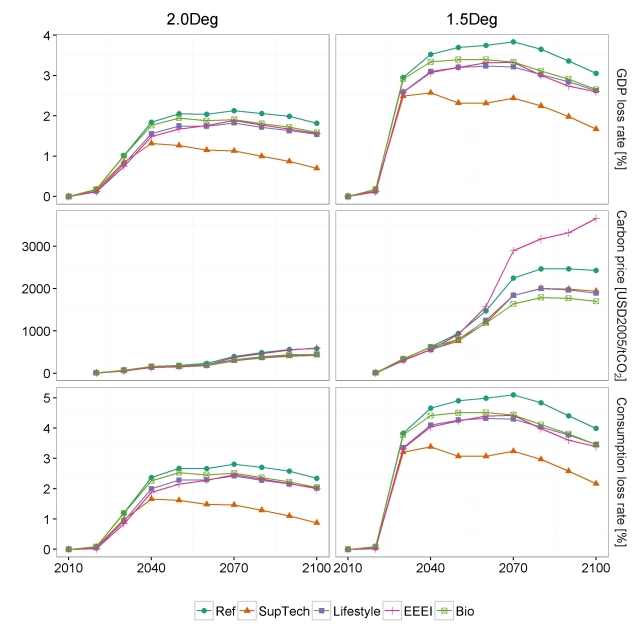Information of Paper
Authors:Jing-Yu Liu, Shinichiro Fujimori, Kiyoshi Takahashi, Tomoko Hasegawa, Xuanming Su, Toshihiko Masui
Year:2018
Journal:Carbon Management, (in press)
Link to the Paper
Keywords
Socioeconomic factors, 1.5 oC goal, Paris Agreement, SSPs, computable general equilibrium (CGE) model
Abstract
The Paris Agreement has confirmed that the ultimate climate policy goal is to hold the increase in the global average temperature to well below 2 OC above pre-industrial levels and to pursue efforts to limit the increase to 1.5 OC. Moving the goal from 2 OC to 1.5 OC calls for much more concerted effort, and presents greater challenges and costs. This study uses an Asia-Pacific Integrated Model/Computable General Equilibrium (AIM/CGE) to evaluate the role of socioeconomic factors (e.g. technological cost and energy demand assumptions) in changing mitigation costs and achieving the 1.5 OC and 2 OC goals, and to identify the channels through which socioeconomic factors affect mitigation costs. Four families of socioeconomic factors were examined, namely low-carbon energy-supply technologies, end-use energy-efficiency improvements, lifestyle changes and biomass-technology promotion (technology cost reduction and social acceptance promotion). The results show that technological improvement in low-carbon energy-supply technologies is the most important factor in reducing mitigation costs. Moreover, under the constraints of the 1.5 OC goal, the relative effectiveness of other socioeconomic factors, such as energy efficiency improvement, lifestyle changes and biomass-related technology promotion, becomes more important in decreasing mitigation cost in the 1.5 OC scenarios than in the 2 OC scenarios.





